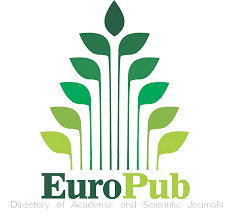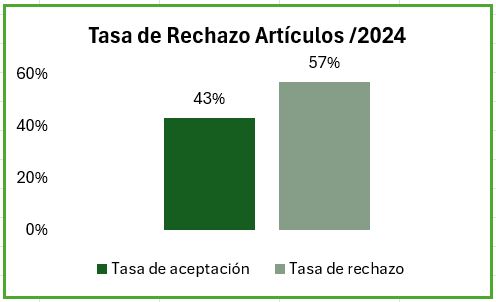Microorganisms with bioprospecting potential from ecological niches at the Estación Agropecuaria UTPL-Loja
DOI:
https://doi.org/10.54753/blc.v13i2.1833Keywords:
bacteria, cyanobacteria, algae, fungi, ecological nicheAbstract
Microorganisms are considered cosmopolitan, displaying genetic variability that enhances their expression in metabolic products that facilitate ecological adaptations to different environments. These characteristics can be exploited for bioprospecting purposes. In this sense, environmental samples were collected from different ecological niches within the Estación Agropecuaria UTPL-Loja, which were classified as biotic (e.g. animals and plants) and abiotic repositories (e.g. stream water, drinking water, milk, rhizosphere, among others). Staining techniques (i.e. Gram stain; Floxine 0.1% and methylene blue) and light microscopic observation (100X magnification) were applied to analyze all samples. In this study the following were detected: fungi (Arbuscular mycorrhizae; Ascochyta sp. Fusarium sp.), microalgae (Chlorella sp.; Ulothrix sp.), cyanobacteria (Lyngbya sp.), Gram positive and negative bacteria (Cocci, Diplococcus, Streptococcus, Bacillus) and the species (Leptothrix ochracea). These results indicate that several sectors within the Estación Agropecuaria UTPL-Loja can be considered "hot spots" with a high diversity of potential microorganisms for bioprospecting given the ecological functionality they possess. For example, plant mycorrhization could be used to generate a bioproduct with arbuscular fungi that promotes soil/plant nutrient exchange.References
Cockell, C. S. (2021). Are microorganisms everywhere they can be?. Environmental Microbiology, 23(11), 6355-6363.
Chesson, P. (2000). Mechanisms of maintenance of species diversity. Annual review of Ecology and Systematics, 343-366.
Dickinson, S., Mientus, M., Frey, D., Amini-Hajibashi, A., Ozturk, S., Shaikh, F., ... y El-Halwagi, M. M. (2017). A review of biodiesel production from microalgae. Clean technologies and environmental policy, 19(3), 637-668.
Douglas, A. E. (2014). Symbiosis as a general principle in eukaryotic evolution. Cold Spring Harbor Perspectives in Biology, 6(2), a016113.
Dumorné, K., Córdova, D. C., Astorga-Eló, M., y Renganathan, P. (2017). Extremozymes: A Potential Source for Industrial Applications. Journal of microbiology and biotechnology, 27(4), 649–659. https://doi.org/10.4014/jmb.1611.11006
Fierer, N., Leff, J. W., Adams, B. J., Nielsen, U. N., Bates, S. T., Lauber, C. L., ... y Caporaso, J. G. (2012). Cross-biome metagenomic analyses of soil microbial communities and their functional attributes. Proceedings of the National Academy of Sciences, 109(52), 21390-21395.
Fleming, E. J., Woyke, T., Donatello, R. A., Kuypers, M. M., Sczyrba, A., Littmann, S., & Emerson, D. (2018). Insights into the fundamental physiology of the uncultured Fe-oxidizing bacterium Leptothrix ochracea. Applied and environmental microbiology, 84(9), e02239-17.
Gupta, G. N., Srivastava, S., Khare, S. K., y Prakash, V. (2014). Extremophiles: an overview of microorganism from extreme environment. International Journal of Agriculture, Environment and Biotechnology, 7(2), 371-380.
Jozala, A. F., Geraldes, D. C., Tundisi, L. L., Feitosa, V. D. A., Breyer, C. A., Cardoso, S. L., ... y Pessoa Jr, A. (2016). Biopharmaceuticals from microorganisms: from production to purification. Brazilian journal of microbiology, 47, 51-63.
Kulkarni, S., y Nikolov, Z. (2018). Process for selective extraction of pigments and functional proteins from Chlorella vulgaris. Algal research, 35, 185-193.
Lee, H., Depuydt, S., Choi, S., Kim, G., Kim, Y., Pandey, L. K., ... y Park, J. (2021). Potential use of nuisance cyanobacteria as a source of anticancer agents. Natural Bioactive Compounds, 203-231.
Lewis, K. (2020). The science of antibiotic discovery. Cell, 181(1), 29-45.
Lynch, M., Ackerman, M. S., Gout, J. F., Long, H., Sung, W., Thomas, W. K., y Foster, P. L. (2016). Genetic drift, selection and the evolution of the mutation rate. Nature Reviews Genetics, 17(11), 704-714.
Nihorimbere, V., Ongena, M., Smargiassi, M., & Thonart, P. (2011). Beneficial effect of the rhizosphere microbial community for plant growth and health. Biotechnologie, Agronomie, Société et Environnement, 15(2), 327-337.
Prasad, S., Malav, L. C., Choudhary, J., Kannojiya, S., Kundu, M., Kumar, S., y Yadav, A. N. (2021). Soil microbiomes for healthy nutrient recycling. In Current trends in microbial biotechnology for sustainable agriculture (pp. 1-21). Springer, Singapore.
Sen, Y., van der Wolf, J., Visser, R. G., y van Heusden, S. (2015). Bacterial canker of tomato: current knowledge of detection, management, resistance, and interactions. Plant Disease, 99(1), 4-13.
Singh, V.K, Singh, Y., y Kumar, P. (2012) Diseases of ornamental plants and their management. In: Singh V.K., Singh Y., Singh A., editors. Eco-friendly innovative approaches in plant disease management. New Delhi: International Book Distributors and Publisher, pp. 543–572.
Tamang, J. P. (2010). Diversity of fermented beverages and alcoholic drinks. Fermented foods and beverages of the world, 85-125.
Tang, D. Y. Y., Khoo, K. S., Chew, K. W., Tao, Y., Ho, S. H., y Show, P. L. (2020). Potential utilization of bioproducts from microalgae for the quality enhancement of natural products. Bioresource technology, 304, 122997.
Torres-Tiji, Y., Fields, F. J., y Mayfield, S. P. (2020). Microalgae as a future food source. Biotechnology advances, 41, 107536.
Trabelsi, D., y Mhamdi, R. (2013). Microbial inoculants and their impact on soil microbial communities: a review. BioMed research international, 2013.
Vitorino, L. C., y Bessa, L. A. (2017). Technological microbiology: development and applications. Frontiers in Microbiology, 8, 827.
Zhou, X., Wang, J., Lu, C., Liao, Q., Gudda, F. O., y Ling, W. (2020). Antibiotics in animal manure and manure-based fertilizers: Occurrence and ecological risk assessment. Chemosphere, 255, 127006.
Published
How to Cite
Issue
Section
License
Copyright (c) 2023 Bosques Latitud Cero

This work is licensed under a Creative Commons Attribution-NonCommercial-ShareAlike 4.0 International License.
This work is published under the Creative Commons Attribution-NonCommercial-ShareAlike 4.0 International (CC BY-NC-SA 4.0) license. This means that users may copy, distribute, and adapt the content, provided that proper credit is given to the authors and the journal. Commercial use of the material is not permitted. Additionally, any derivative work must be distributed under the same license. This license ensures open access to knowledge, promoting the dissemination and reuse of published works for non-commercial purposes, respecting authorship, and ensuring the free circulation of content under fair terms.




























